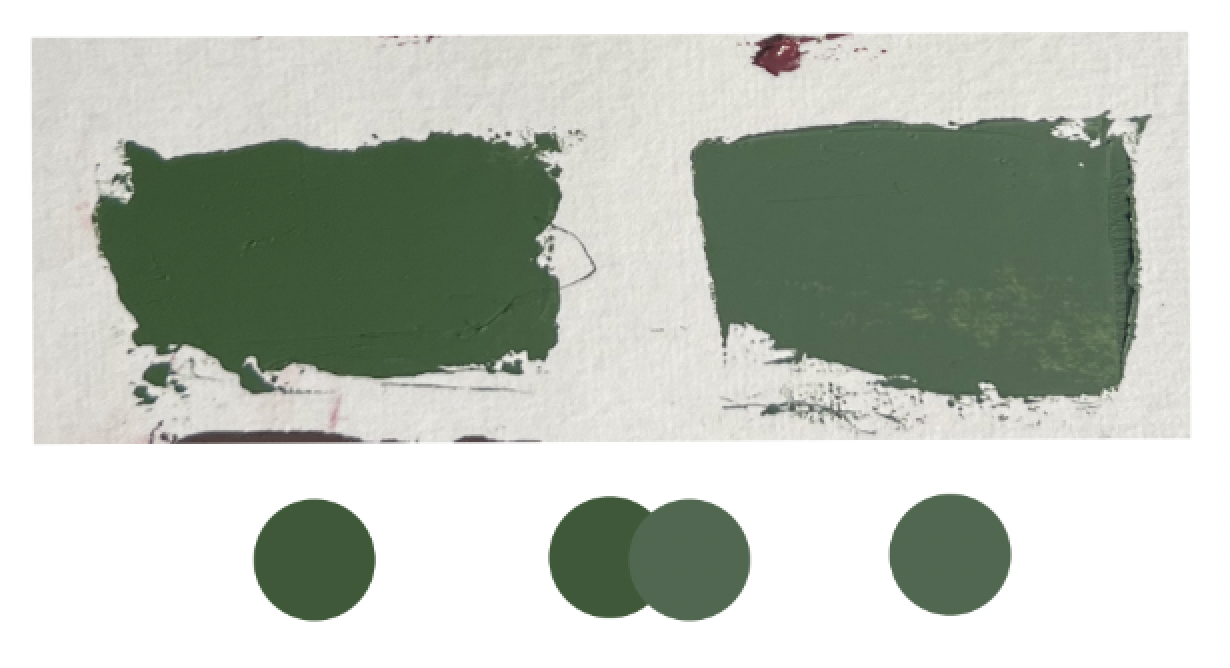The Mysteries of Colour in Art: Exploring Metamerism
In the realm of painting and art, colours hold a special place, captivating artists and viewers alike. The perception of colours, and colour theory, is a fascinating interplay of science and artistry. Among the many intriguing aspects of colour, one significant concept that profoundly influences painting and art is "metamerism." In this blog, we will delve into metamerism and its relevance to the world of painting and artistic expression.
Understanding Metamerism in Art
Metamerism, in the context of art, refers to the phenomenon where two pigments or colour mixtures, which may have different physical compositions, appear visually indistinguishable under specific lighting conditions (and vastly different in others). This optical illusion occurs due to the way our eyes perceive colour. Our eyes contain three types of colour receptors, or cones, which are sensitive to different wavelengths, roughly corresponding to red, green, and blue.
When artists mix pigments to create a particular colour, the resulting colour's perception relies on the light it reflects to our eyes and how our cones respond to it. When two different pigment mixtures stimulate the same cone responses, they appear as a color match to the viewer, regardless of their distinct physical compositions.
Metamerism Experiment:
Curious to observe the diverse appearances of different paint mixtures under varying light sources, I conducted an experiment. To create two nearly identical paint mixtures, I worked under fixed lighting conditions, free from any interference from natural light or windows. Starting with a base green of Oxide of Chromium, I added slightly different yellow paints to each batch. Paint A consisted of Cobalt Yellow, while Paint B contained Naples Yellow Hue. To achieve the closest possible resemblance, I kept a small amount of Cobalt Blue on my palette for adjusting the paints as needed.
The outcome of the paints under this lighting condition is as seen (bear in mind discrepancies when viewing on a monitor - might not be accurate):
Paint A on Left, Paint B on Right. Photographed in studio lighting, slightly cool toned lights. (If you mention the brush hair, you are no longer my friend…)
Whilst they are not an exact match I believe them to be very VERY close as seen by the main body swatch circles underneath (the centre most circles being direct comparisons)
From here I exposed these swatches to varying light sources around my flat:
Paint A on Left, Paint B on Right. Photographed in shaded area away from natural light.
Paint A on Left, Paint B on Right. Photographed in natural light (outside is overcast).
Paint A on Left, Paint B on Right. Photographed in warm lighting.
As evident from the observation, not only do the colours transform with the changing lighting tones, but the side-by-side comparison also highlights a growing contrast when compared to the original lighting.
Left hand column is Paint A, Right hand column is Paint B.
Although this experiment isn't an exact science, nor does it provide a dramatic example, it effectively showcases the impact of metamerism. The results of this experiment underscore the significance of considering your light source while painting. If feasible, take the opportunity to walk around with your painting, changing locations to identify any undesirable color and light interactions.
Implications in Painting and Artistic Expression
Metamerism significantly impacts artists and their works, offering creative possibilities and presenting challenges in colour matching. It allows artists to create a vast array of colours using a limited palette of pigments, resulting in visually harmonious and appealing combinations not found on a standard colour wheel.
By skillfully manipulating pigments, artists enhance the emotional impact and visual dynamics of their artwork. However, understanding metamerism is crucial when digitally scanning or printing artwork, as different light sources can alter colour appearances. Artists must carefully select pigments and colour mixtures to ensure consistent essence and impact across various display environments.
Moreover, metamerism poses challenges in mixing colours to match existing painting colours. Artists may find it difficult to precisely replicate a colour from an artwork due to the subtle interactions between pigments and lighting conditions. Achieving an exact match may require multiple attempts and adjustments, as metamerism can cause colours to appear differently under varying light sources.
Despite these challenges, embracing metamerism empowers artists to push creative boundaries and master colour expression, ensuring that their artwork remains visually captivating and impactful.
Challenges and Considerations
While metamerism offers artists numerous creative opportunities, it also poses challenges. Artists must be aware that the perceived colour of their artwork may vary depending on the lighting conditions in which it is displayed. This becomes particularly relevant for artists whose works are exhibited in various galleries, museums, or even online platforms with different lighting setups.
To overcome these challenges, artists can use standardized colour palettes and carefully consider the lighting environment in which their artwork will be displayed. Additionally, they can experiment with different pigments and colour mixtures to minimize the impact of metamerism and achieve the desired visual effect across various lighting conditions.
Conclusion
Metamerism adds an intriguing layer to the world of painting and art, offering both creative possibilities and technical challenges. As artists continue to explore the complexities of colour perception, they gain insights into how to manipulate pigments and create captivating visual experiences for their viewers. Understanding metamerism allows artists to leverage the play of light and colour to breathe life into their creations, ensuring that their artistic visions remain vibrant and timeless, regardless of the lighting conditions that surround them.
Hope you enjoyed this read! I enjoyed researching this concept as it is one fairly new to me - or at least as an official phenomenon.
Comment down below if you’ve ever faced challenges with metamer colours, or if this concept is also new to you!
-Rhiannon





